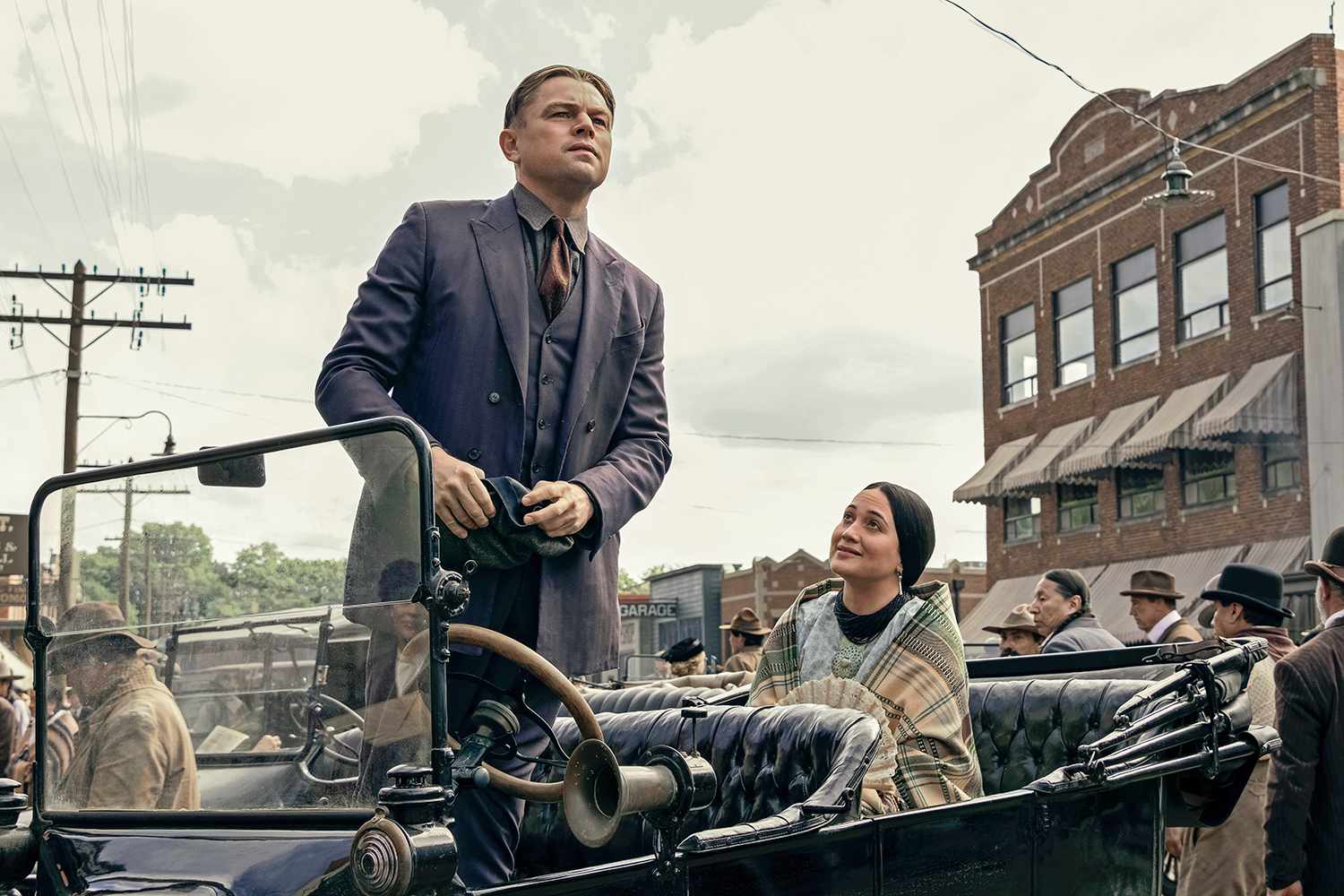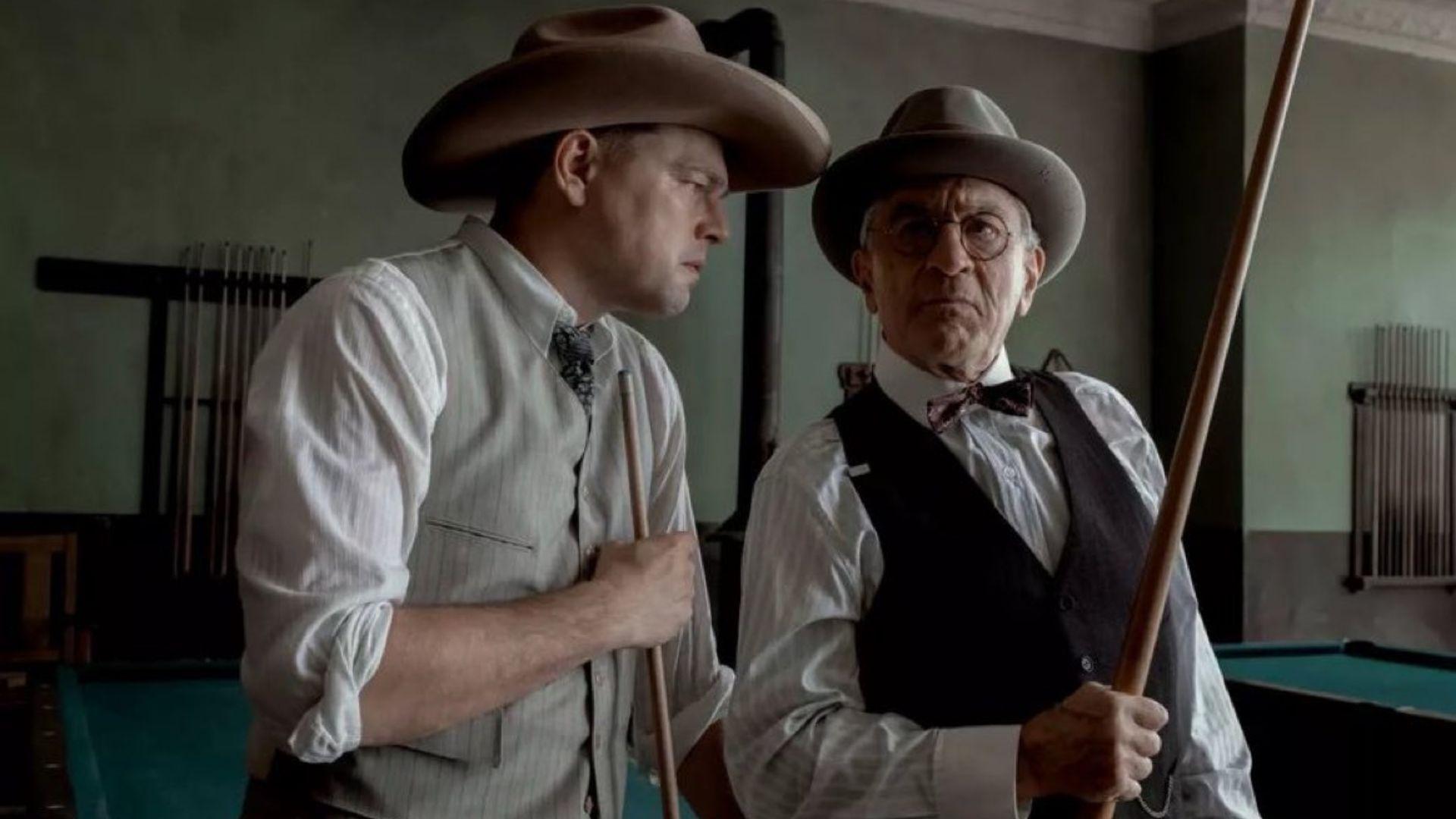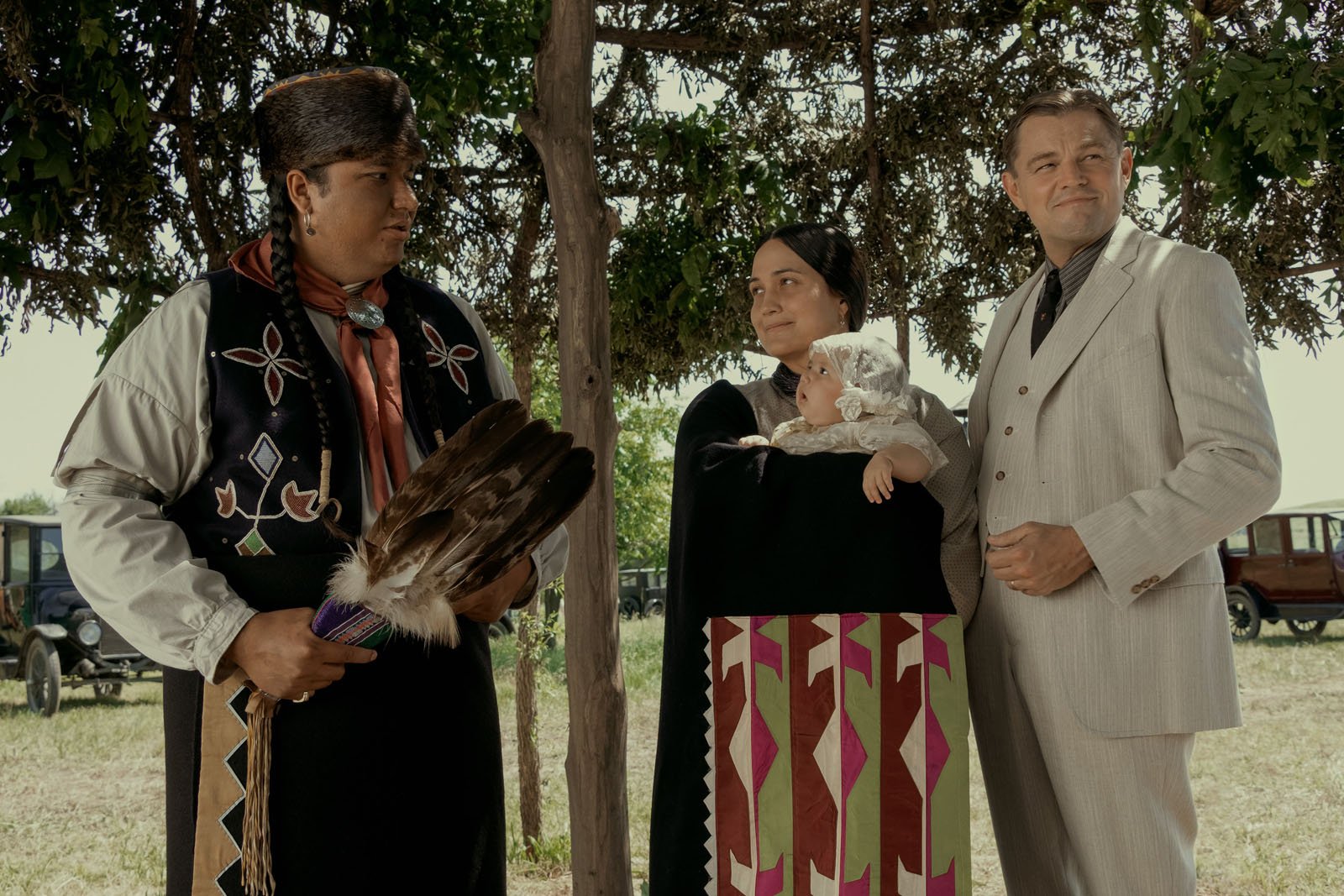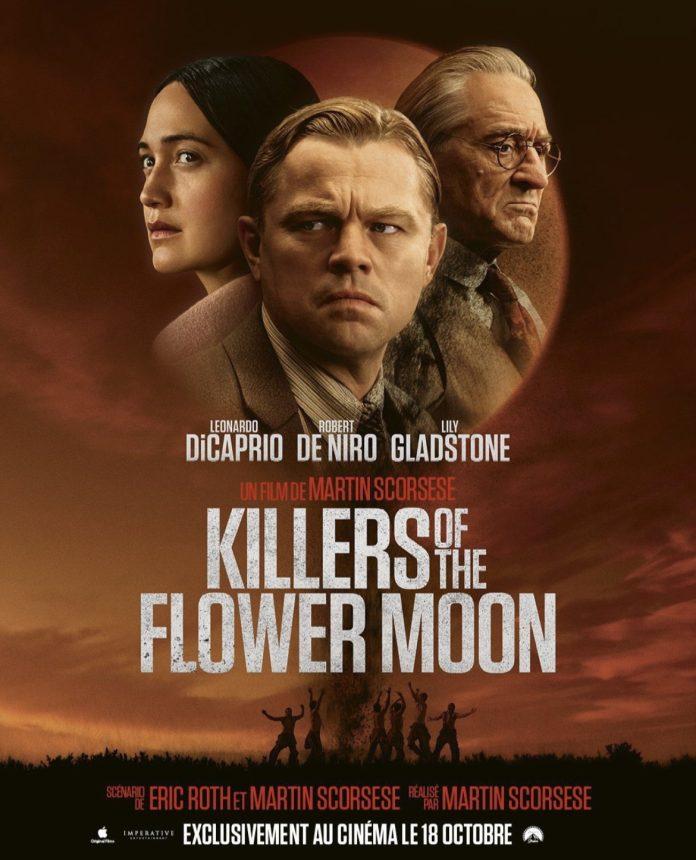Martin Scorsese’s latest film tells the story of the Osage Murders through the relationship of three figures at its epicenter. Daring and compassionate, the film expertly builds upon the legacy of one of our greatest living filmmakers.
If a film has something important to say, it is imperative to set a tone early. First impressions are key to set the audience in the right frame of mind. The very first scene of Killers of the Flower Moon depicts the Osage nation’s reluctant decision to integrate into white society. As an opening scene, it is a heartbreaker; giving up their way of life and culture for a better chance at survival. It suggests a bleak future, but also narrows the audience’s focus. From the beginning there is sorrow for these people, and although we may hope for things to improve, we already know it won’t.
Part of the reason for the blind cynicism is that Killers of the Flower Moon is based on actual historical events. The Osage Murders are at least familiar to some aspect of the general population. The other reason is the man behind the camera, the legendary Martin Scorsese returning to direct his 26th feature film. Only twice have Scorsese’s films ended well for his main characters. Combine these attributes and you’ll already know there won’t be a lot of opportunity to experience joy within the film’s 3.5 hour runtime.
Killers of the Flower Moon
Directed By: Martin Scorsese
Written By: Eric Roth, Martin Scorsese
Starring: Leonardo DiCaprio, Lily Gladstone, Robert DeNiro
Release Date: October 20th, 2023
But bleak doesn’t mean empty. Killers of the Flower Moon is far from empty. It is actually full of life. Every facet of it. Birth, death, and everything in between. The film takes the name of the novel it was based upon, but Scorsese isn’t satisfied by simply making an adaptation. Killers of the Flower Moon doesn’t provide a broad perspective on these terrible times, instead it offers an intimate portrayal almost from the inside out. Scorsese places his audience at the ground level. He embeds us within this society to live through this experience rather than see it from above. The film unfolds organically, rather than as a retrospective retelling.

To accomplish this, Scorsese makes some important creative decisions that a filmmaker with less experience and perhaps less stature would not be capable or allowed to make. He chooses to convey this story through the personal lives of three individuals, rather than depict them as cogs within a larger machine. In doing so it makes the risky decision of somewhat inverting the intention of the novel on which the film was based. Taking liberties with a source material is usually a red flag. But in this case because it is based on a real event with real people involved, and because of Scorsese’s experience, it was a necessary change.
Scorsese worked closely with the Osage to capture their life as authentically as he could, ensuring the film places value upon their perspective more than any contemporary bias the audience may bring with them. That opening scene is a perfect example; it is essentially a funeral for a nation. He acknowledges the loss upfront, to demonstrate how what comes next was not deserved. When the Osage become wealthy because they find oil on their land, it is more of a curse than a blessing. Instead of it being an opportunity to ensure their nation’s long-sought survival, it instead threatens to hasten their end.
For starters, despite the oil boom the Osage can’t directly control their own wealth. White people serve as their guardians who get the ultimate say on when they can get their money and what they can do with it. Enter William Hale (Robert De Niro), a wealthy rancher who proclaims himself as “King of the Osage” because he befriends the tribe and pretends to have their best interests in mind. But in reality his ranch and friendly ways are a front, as he secretly enacts a plan to murder key Osage figures so he is able to control their wealth.

When Hale’s nephew Ernest Burkhart (Leonardo DiCaprio) comes to work with him after serving in WWI, he falls in love with an Osage woman named Mollie Kyle (Lily Gladstone), and eventually marries her. Mollie is a member of a wealthy family who had already been targeted by Hale’s deadly scheme. Slowly Hale brings his naive nephew into the fold, and manipulates him against his own wife.
Scorsese’s experience making films about organized crime serves him well, as he is able to provide informative glimpses within the psyches of those committing nefarious acts out in the open. It helps that he also has two actors who have impressive bodies of work in just these sorts of roles. DeNiro in particular gives the film an easy-to-target antagonist. Hale just might be the (morally) worst character he has ever portrayed. He isn’t just a gangster fueled by greed, he’s the devil’s salesman luring in his victims because he gives them hope where no one else will. Society’s racial prejudice against the Osage allows him to paint them as obstacles in the way of an American dream he believes is rightfully his.
Yet as much incredible acting prowess is exhibited by the film’s male leads, the highlight of the film is easily Lily Gladstone as Burkhart’s wise but heavily conflicted wife. Burkhart himself is too thick-skulled to see the ruin he is leaving in his wake until it is too late. But Mollie sees it the moment she meets him, and goes ahead and falls in love with him anyway. The intense weight of emotion emanating from Gladstone’s eyes as she watches the turmoil unfold around her is heart wrenching. DiCaprio’s performance may be the engine that drives the film, but Gladstone is its hero. It’s not just the actions her character takes, but the way she conveys this deep understanding of the world around her and finds a way to persevere despite it.

So, in spite of the atrocities depicted onscreen Flowers of the Killer Moon does showcase the slimmest of silver linings. Mollie shows incredible fortitude and personal integrity in the face of certain death, all while hardly saying a word. In contrast, Hale lures his victims with his slithery speech and bombastic ways. The film makes a point to show how this may have been the world almost 100 years ago, but it still works in mostly the same way. Those who make the loudest noises, who have to claim to be doing the greater good, are doing so for their own benefit and drawing in those directionless hoards to their faulty causes. It is also always good when Jesse Plemons shows up.
Ultimately this is a Scorsese movie, and so you get to experience one of the most successful storytellers in the history of cinema do what he does best. The picture is conveyed in a fitting near-sepia, and in one climactic moment even peers through fire as if to conjure up the brutal and hate-filled reality of the situation. Despite the lengthy runtime, it all feels very necessary. Scorsese doesn’t allow the audience to take part in any guilty pleasures as he is known to do, nor does he shy away from the brutal truth of the situation. What keeps us engaged is Scorsese’s own compassion for the subject, a crusade to tell a story not as a history lesson but as if he is excavating a forgotten truth. We sense the importance of his mission, and follow along.















